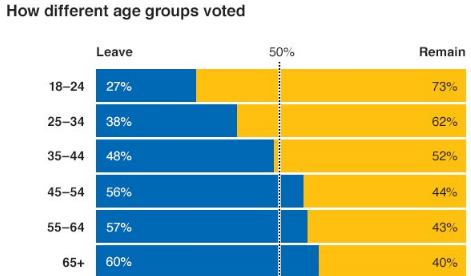 Two recent mediations vie for entry into the pantheon of failed mediations. They both suffered from the similar flaws in which one or more parties appeared with no authority to contribute to a joint financial settlement. Both cases were set up as cost sharing negotiations and were briefed as such . . . or maybe they weren’t . . .
Two recent mediations vie for entry into the pantheon of failed mediations. They both suffered from the similar flaws in which one or more parties appeared with no authority to contribute to a joint financial settlement. Both cases were set up as cost sharing negotiations and were briefed as such . . . or maybe they weren’t . . .
Some background: The first mediation was intended to reach a negotiated allocation among five parties of the cost of remediating groundwater PCE contamination. All parties attended with clients and insurance carrier representatives. In advance of the mediation three parties presented proposed allocations of the cleanup costs to start the negotiations. One of the two remaining parties had consistently argued that it had no responsibility for the commingled plume and on that basis neither provided an allocation nor offered anything more than a “nuisance” payment at the mediation. This was not surprising. The fifth party’s written submission also did not comment on allocation or indicate a willingness to participate financially in the settlement. This raised concerns pre-mediation.
The second case was one in a series of drinking water contamination cases allegedly caused by chemical components in agricultural fertilizer products that were applied in many farming communities over a long period of time. That mediation involved three parties and, similarly, was intended to collectively fund a water treatment system to provide clean drinking water from municipal wells. By all accounts, one of the parties had aggressively pushed for an early mediation and giving this case priority treatment in the trial/mediation queue established by the presiding judge. However, the party that had initiated the mediation unexpectedly came with very limited and only “recommended” settlement authority that was woefully insufficient in light of the facts, seemingly out of step with its actions in championing an early mediation.
Following usual protocol, I received mediation statements from the parties in each of these cases a few days before their scheduled mediation dates; and in both cases my “radar” indicated trouble ahead. I called as many of the parties as I could reach to discuss my concerns. Some held their intentions close to their vests, while others didn’t know what their adversaries intended to do.
I have ruminated about each of these cases – feeling partially responsible, as the “master of mediations ceremonies,” for our collective inability to get traction toward settlement. I probably should have acted more aggressively in following up on my instincts that the cases were not properly postured for settlement. That is much clearer to me in hindsight, particularly in respect to the second case, as I reflect on the pre-mediation submission of the party, which everyone agreed had pushed hard to mediate quickly. When a party’s confidential statement for the mediator’s eyes (which is usually more candid than a publicly shared brief) focuses entirely on the others parties’ liability and includes no hint that a settlement would include a financial contribution from that party, I should have acted more deliberately to determine whether the parties were under differing impressions of the mediation’s purpose and utility – even suggesting that we not proceed on the upcoming date if my suspicions were confirmed. And confirmed they were at the mediation when the other two parties who had settled several cases together after tough but fair negotiations, would not even begin meaningful negotiations without at least an indication of some proportionately fair participation from the requesting party. I tried all day, in many ways, to jump-start the negotiations, but the damage had already been done. The two parties felt that they had been misled into agreeing to an early mediation because they had assumed, as many would have, that the party requesting to mediate was prepared to take the lead in the negotiations or, at a minimum, participate at a level showing real interest in a collectively bargained for settlement among all three parties.
To this day, I do not understand the requesting party’s strategy. Most likely it had to do with other dealings with its adversaries away from the table – including other cases to be settled among the three parties. Importantly, though, that was never discussed. Rather, the party continued to assert traditional non-liability arguments that it likely knew did not really justify its stance in this negotiation. I believe that if the true story behind the mediation had been revealed and discussed more openly, we would have been able to settle the instant case without prejudicing the “away from the table” issues – or maybe resolved those as well.
Another important point applicable to both mediations is more straight-forward: it is really hard if not impossible to settle “joint liability” cases solely with the other parties’ money without any of your own (or without bringing some other contributory value to the negotiating table). Sometimes parties will start a negotiation without showing their hand but ease into a more accommodating negotiation stance over time. This, of course, is perfectly acceptable. Everyone has their own style and levels of comfort in making and responding to settlement proposals.
But to come to a mediation, where it is clear in advance that the other parties will be there with clients and insurers ready to negotiate the allocation of multi-million dollar funds – and where the mediation was preceded by preparatory discussions that clearly indicated that everyone expected all other parties to do the same – yet to offer nothing at the mediation makes little sense. Why come in the first place? Why spend the money to do so? Wouldn’t it have been better to inform your opponents of your intentions so they could decide for themselves whether it was worthwhile to meet nonetheless? It would go a long way to maintaining a good working relationship with your adversaries and better preserve future settlement opportunities.
This also goes to the point I have written about in more depth in other blog posts – that mediation is an alternative process, not litigation in miniature. It is about settlement and often, compromise. I believe it isn’t productive – and can be counter-productive – to come into mediation to argue zero liability and zero payment, without advance notice to your adversaries who likely have different assumptions about what it will take to reach a mediated settlement. “Zero testing” is better done in court as a last resort after you have explored settlement options that better manage your risk. These tactics do not play well in mediation and usually fail.
Remember, unless you say yes, you can never be forced into an involuntary agreement in mediation, so why not take best advantage of a mediation by positively exploring the possibilities for compromise – if you don’t like the final proposed settlement terms, then don’t agree to them. The old maxim remains true in mediation as in life: Nothing ventured, nothing gained.






[…] lack of strict rules and formal procedure. I have written about these in prior blogs, including attendance without reasonable levels of authority to settle, party specific mediation strategies that mirror litigation tactics – to which mediation is […]